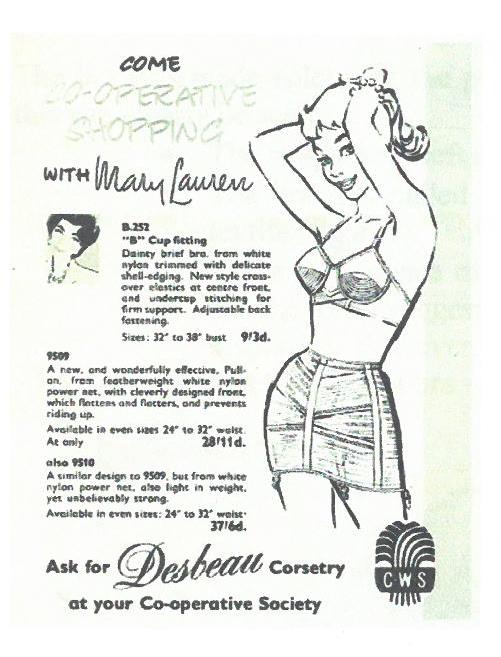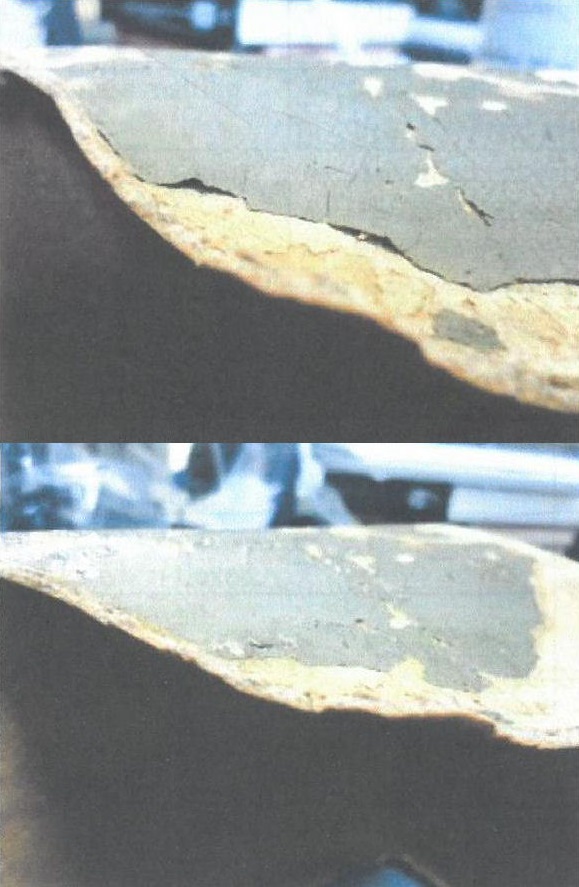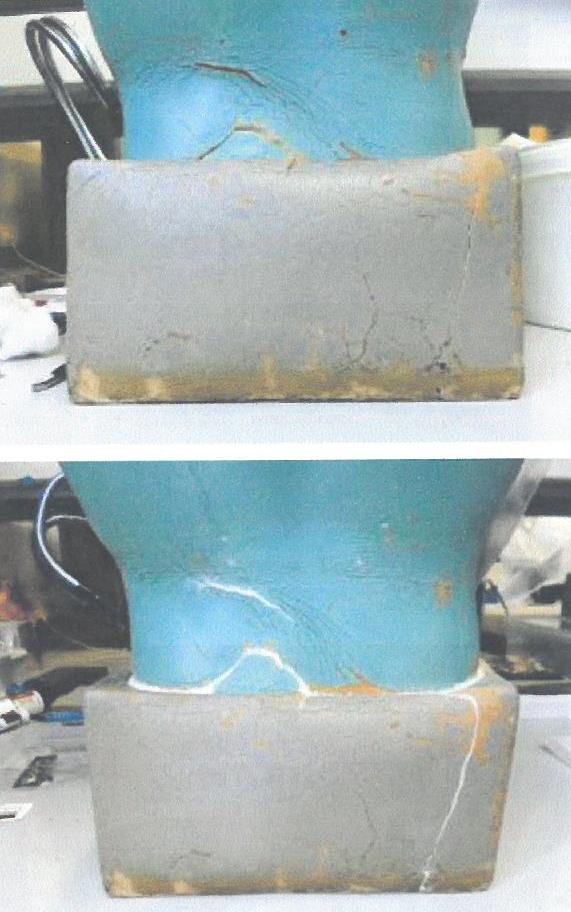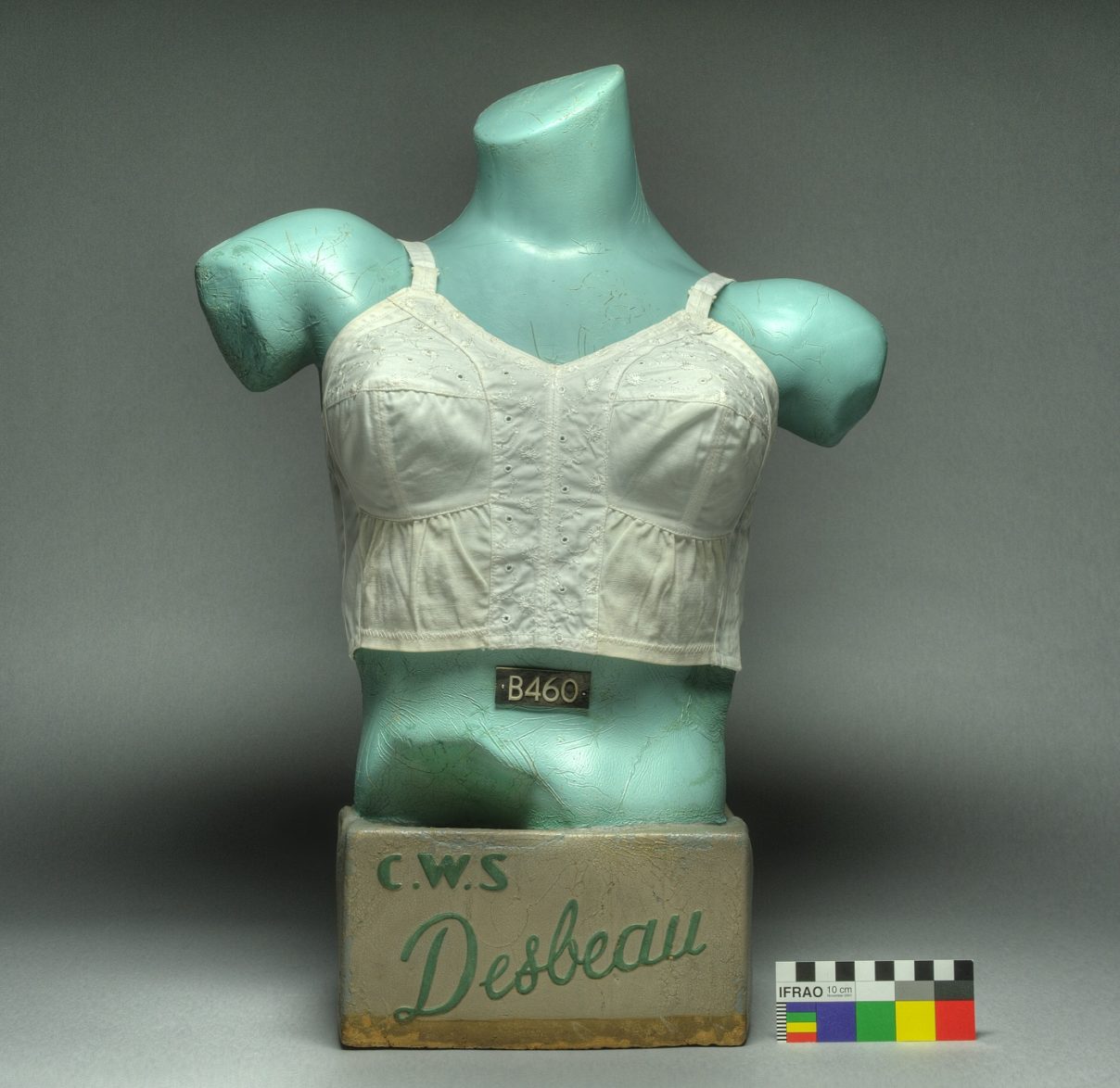C.W.S ‘Desbeau’ Bra and Mannequin Bust
Object

Our students have been back a week and they’re really starting to get to grips with their new objects but before they start posting about what they’re getting up to I thought I’d post about an object from a few years ago that was conserved by one of our previous students. It’s a Co-operative Wholesale Society (C.W.S) ‘Desbeau’ bra and mannequin bust, which belongs to Beamish Museum; a living museum which tells the story of everyday life in the North East through time. The object was brought for conservation work as it was intended for display in the 1950’s town, which should be completed in the next few years.
It is unclear where the mannequin was manufactured, however it is likely that the bra was made at the C.W.S corset factory in Desborough, Northamptonshire. Based on comparative examples regarding form, style and materials and from examining adverts, it is possible the pieces were manufactured between 1950-1967.

The C.W.S began trading in 1864, manufacturing and selling their own brand goods and they grew to become one of the largest co-operative organisations in the United Kingdom. By the early 1950’s at least one third of the entire population was connected to the C.W.S in one way or another.
From the 15th century miniature fashion dolls that exhibited the latest styles and fashions were often sent to wealthy customers by dressmakers. From that point the mannequin underwent a number of transformations until by the 1950s plastic, mobile mannequins were made. This particular mannequin is thought to be a composite plastic. Extensive examination and analysis suggests that it could be a saturated polyester. The bra itself was analysed by examining small samples of the textile and material under a microscope. It was confirmed to contain cotton, a synthetic textile and rubber thread as well as small sections of metal.
The C.W.S ‘Desbeau’ bra and mannequin entered the conservation laboratory in a deteriorated condition and it was unable to be displayed in its present state.
Condition
- The plastic was brittle with splits and tears.
- The paint was lifting and cracked in places – there were several areas of total paint loss.
- Paper label was delaminating.
- The mannequin was covered in a layer of dust and dirt.
- The bra had several areas of mould and iron stains on the cotton fabric.
- The rubber was losing its elasticity.
- The metal components showed evidence of corrosion.
Conservation Treatment – Mannequin and Paper Label

Several components of the object were removed before conservation treatment began. The iron nails were removed as they were corroded, while the bra and paper label were removed in order to treat them separately from the mannequin.
As there was limited information regarding the successful reshaping of plastics in conservation literature, industrial approaches were investigated and tested. The mannequin was then heated and reshaped, though this treatment caused a number of the seams to come apart and several new cracks appeared. Often this type of treatment would be deemed inappropriate as the risk to the object would be too great, however as Beamish desired the mannequin to look, ‘as new’ the benefits were seen to outweigh the risks.
Once the mannequin was reshaped it was surface cleaned using an appropriate solvent that wouldn’t damage the plastic (plastics are sensitive to the majority of solvents). The cracked and lifting paint required stabilising in order to prevent further deterioration of the surface. This process needed to be considered carefully as a number of consolidants could damage the plastic beneath the paint. A number of properties were desirable for the consolidant in order for it to work effectively:
- A good working consistency so it would be easily drawn under the paint.
- Be strong enough to hold the paint in place.
- Be flexible.
- Be clear when fully cured.
- Be reversible.

Testing was carried out using a number of appropriate consolidates and the most effective was chosen to consolidate the paint.
The splits and tears required reinforcing in order to stabilise and strengthen the mannequin so it would be suitable for display. The fill for the splits and tears was required to have a smooth finish and improve the overall aesthetic of the object. A variety of adhesives and materials were tested in order to see which would meet the desired criteria and the combination that was the closest match was chosen and applied. These filled areas were then colour matched in order to blend them with the original material of the object and make the mannequin suitable for display.
The paper label was surface cleaned using appropriate dry cleaning methods and the delaminating layers were then adhered and stabilised using an appropriate paper adhesive. This paper label was then reattached to the mannequin with new brass pins using the original holes.
Conservation Treatment – Bra

The bra was surface cleaned using a soft brush and a vacuum on gentle suction in order to remove the surface dirt. The item was then carefully wet cleaned using deionised water and a suitable detergent in order to remove further dirt. As the iron and mould stains were not removed during the wet cleaning process, further interventive measures were required.
Testing was carried out using a number of chemicals and from studying the results, a suitable and effective treatment was used on the mould and corrosion stains in order to remove them from the surface of the garment. The bra was then rinsed thoroughly using appropriate solvents in order to remove any remaining residues.

The metal components of the garment, which showed signs of corrosion, were mechanically cleaned by hand using specific tools and methods. A protective consolidant was applied to the surface of the metal once cleaning was complete in order to deter corrosion forming in the future.
The overall conservation treatment of the C.W.S ‘Desbeau’ bra and mannequin was deemed successful despite the belief that a number of the treatments, for example reshaping the plastic, were irreversible. However as this was potentially the last opportunity to save the object in question, it can be argued that reversibility is less of an issue. Compromise was essential in determining the treatments required for the C.W.S ‘Desbeau’ bra and mannequin, which took into consideration both the needs of the object and its designated roll so that it can be understood and enjoyed by future generations.
References
- Audas, J. (2005) ‘Mannequins’ in V. Steele (ed) Encyclopedia of Clothing and Fashion: Vol 2, New York: Charles Scribner’s and Sons.
- Evans, R. (2013) ‘Future Plans’ Beamish: The Living Museum of the North [online].
- Landi, S. (1985) The Textile Conservators Manual, London: Butterworth & Co. Limited.
- National Co-operative Archive (2013) Co-operative Wholesale Society [online].
- Parrot, N. (1982) Mannequins, London: St. Martins Press.
- Shashoua, Y. (1999) Conservation of Plastics: Materials Science, Degredation and Preservation, Oxford: Butterworth-Heinemann.

2 Comments
Karen
Vicky Garlick